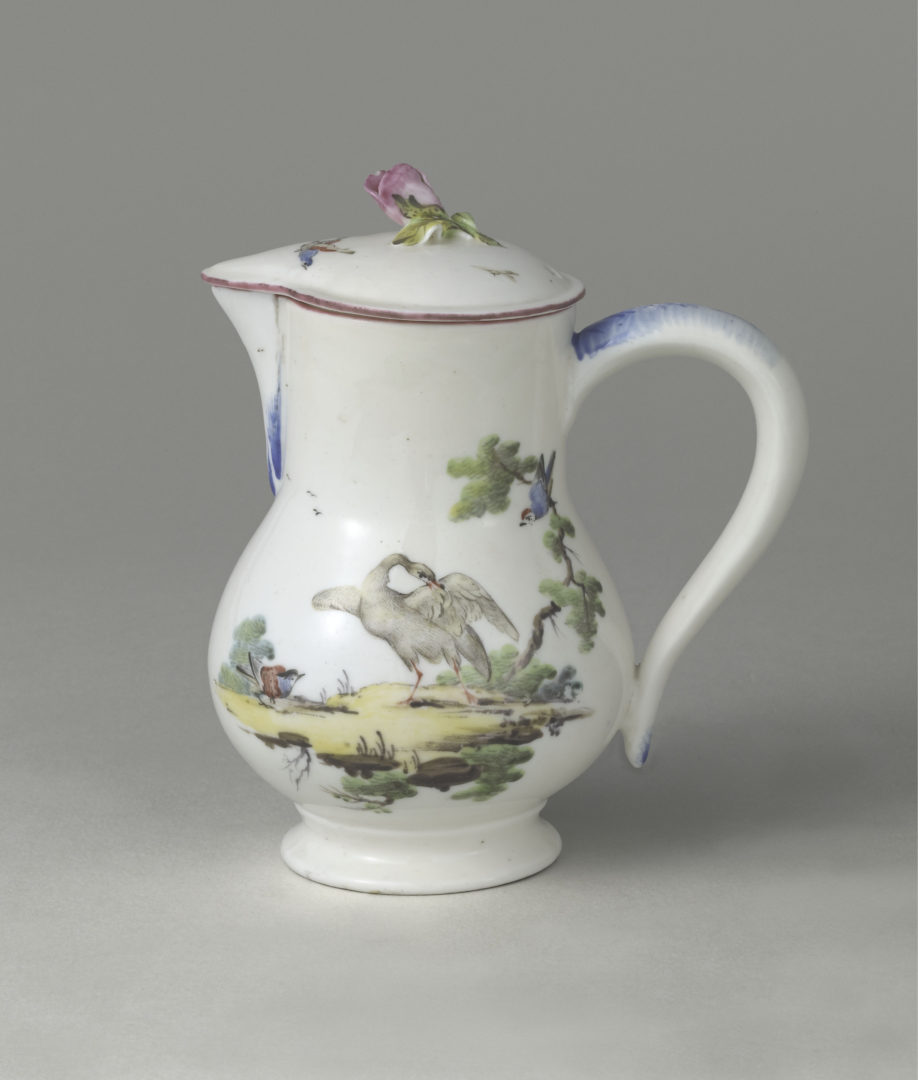Shown here are two eight-lobed Sceaux faience plates decorated (by Fidelle Duvivier) in petit feu enamel colors with birds in flight or standing on rocky plateaux with vegetation, surrounded by fruits and delicately outlined leaves painted on the rims. Traces of gilding on the edges.
These two plates came up at a silent auction held in the spring of 2016 in Geneva, Switzerland.(i) A faience dealer in France was the successful bidder. By chance, I found them at his website a couple of months later and purchased them.
Although the vegetation is painted in a rather unfamiliar and more fluid style, the bird seen on the lower plate was a sure clue that these two plates were decorated by Duvivier (cf. 2, 3a/b, 4).
In fact, this swan is a recurring motif of Duvivier’s during both periods of his work as a decorator at Sceaux, as one can see from the examples in 3a/b and 4. The plates such as the one in (3a) with the notched or indented edges (referred to as assiettes à bord déchiqueté) were painted on the edges mainly in royal blue with a delicate “comb” pattern (9) known as peignés bleus.(ii) One can imagine that these plates were more costly in their production and intentionally given a finer kind of decoration than was found on the simpler eight-lobed or round faience plates. The added cut fruits (fruits coupés) were popular decorative elements in the Sceaux production throughout the second period – as were the bird motifs. (For other related Duvivier examples see In the Footsteps of Fidelle Duvivier, pp. 20-28).
A third swan example is found on a later water jug (pot à eau) of the Glot period (4).
5a (Detail of top plate in 1) Photo by the author.
© The Fitzwilliam Museum, Cambridge (EC 4 & A-1943). (See 52a/c in my book).
NOTES
(i) “Suite de 2 assiettes, XVIIIe siècle, à décor d’oiseaux polychrome. Diam. 24 cm. Provenance: Fondation suisse.” Silencious sale, 7 March 2016, Lot 3187, Piguet Hôtel des Ventes, Geneva, Switzerland.
(ii) Auction, PIASA Hôtel Drouot, 10 Dec. 2010, Lot 162, Sceaux (now in the Musée de l’Île-de-France, Sceaux). “Assiette à bord déchiqueté à décor polychrome au centre d’un cygne dressé sur un rocher sur une terrasse ornée de fruits et arbuste, l’aile décorée de trois groupes de fruits, peignés bleus sur le bord. XVIIIe siècle. Diamètre: 24 cm. 1 200 / 1 500 €.”
The Municipal collection of Mennecy porcelain is described on pp. 16-19 at this link: http://www.essonne.fr/fileadmin/sports_loisirs/Archives_departementales_2009/pdfs/papyvores/Papy_31-basse_def.pdf











